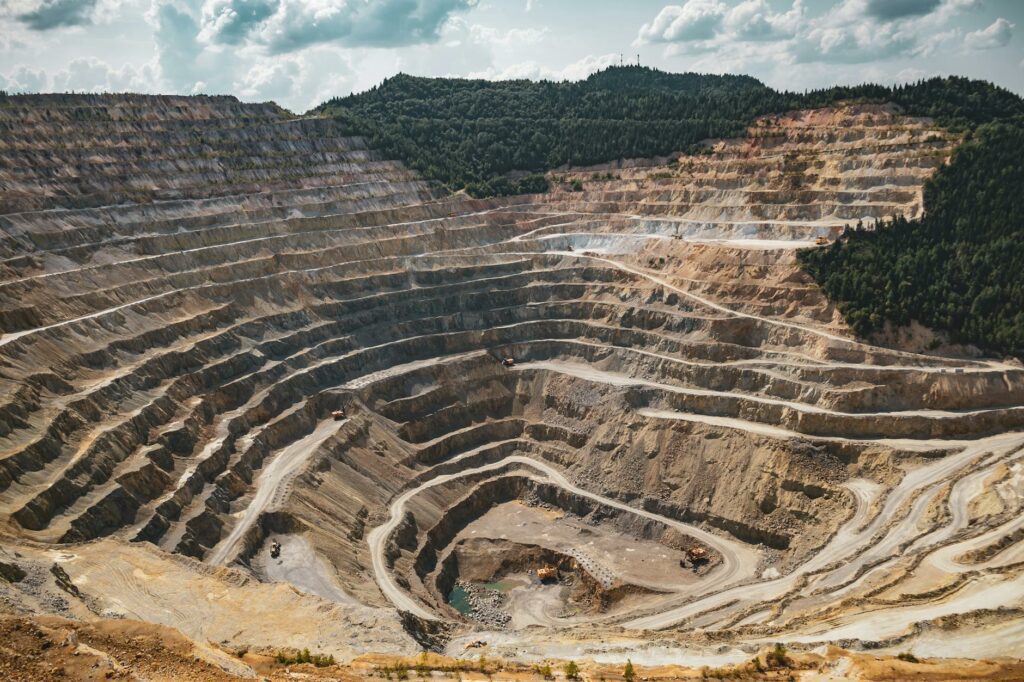Understanding Ethereum
To grasp the concept of Ethereum mining, it’s essential to first understand what Ethereum is and the basics of blockchain technology.
What is Ethereum?
Ethereum is a decentralized, open-source blockchain platform that enables the creation and execution of smart contracts. It was proposed by Vitalik Buterin in late 2013 and officially launched in 2015. Unlike Bitcoin, which primarily serves as a digital currency, Ethereum is a platform that supports the development of decentralized applications (DApps) and facilitates the creation of new cryptocurrencies through Initial Coin Offerings (ICOs).
Ethereum operates on its native cryptocurrency called Ether (ETH), which is used to pay for computational services and transactions on the network. Ether can also be traded on various cryptocurrency exchanges. The value of Ether, like other cryptocurrencies, fluctuates based on market demand and other factors. For the current price of Ethereum, check out our article on ethereum price.
The Basics of Blockchain Technology
Blockchain technology forms the foundation of Ethereum and many other cryptocurrencies. It is a decentralized and distributed ledger that records transactions across multiple computers (nodes) in a secure and transparent manner. The blockchain consists of blocks, each containing a list of transactions. These blocks are linked together in a chronological order, creating an immutable chain of information.
One of the key features of blockchain technology is its decentralized nature. Unlike traditional centralized systems, where a single authority controls and verifies transactions, blockchain relies on a network of participants (nodes) to validate and confirm transactions. This decentralized consensus mechanism ensures transparency, security, and resistance to censorship.
In the case of Ethereum, the blockchain not only records transactions but also executes smart contracts. Smart contracts are self-executing agreements with predefined rules and conditions. They eliminate the need for intermediaries, enabling direct peer-to-peer interactions and automating various processes.
To get a more comprehensive understanding of Ethereum and its underlying technology, explore our articles on what is ethereum, ethereum blockchain, and ethereum cryptocurrency. The Ethereum whitepaper, authored by Vitalik Buterin, is also a valuable resource for those seeking a deeper dive into the technical details of the platform. You can find it in our article on ethereum whitepaper.
Now that we have a foundational understanding of Ethereum and blockchain technology, let’s delve into the concept of Ethereum mining and how it operates.
Unveiling Ethereum Mining
To truly understand Ethereum mining, it’s essential to grasp the concept of what Ethereum is and how it operates within the blockchain ecosystem.
What is Ethereum Mining?
Ethereum mining refers to the process of validating and adding new transactions to the Ethereum blockchain. Miners play a vital role in maintaining the integrity and security of the network by verifying the authenticity of transactions and creating new blocks.
Unlike traditional mining, which involves extracting physical resources from the ground, Ethereum mining is a computational process. Miners use powerful computers to solve complex mathematical problems, known as proof-of-work algorithms, in order to validate transactions.
As a reward for their efforts, miners earn newly minted Ether (ETH) coins. Ethereum mining not only facilitates the creation of new Ether, but it also helps to secure the network and ensure the smooth functioning of the Ethereum ecosystem.
How Does Ethereum Mining Work?
Ethereum mining operates on a decentralized network of computers, also known as nodes. When a user initiates a transaction on the Ethereum network, it is broadcasted to all the nodes. Miners then collect these transactions and attempt to solve the mathematical puzzle associated with the current block.
To solve the puzzle, miners use their computational power to find a unique hash value that meets specific criteria. This process is known as hashing. The first miner to find the correct hash is rewarded with a predetermined amount of Ether and gets to add a new block to the blockchain.
The Ethereum network adjusts the difficulty of the mining puzzle dynamically to ensure that new blocks are added approximately every 15 seconds. This adjustment helps maintain a consistent block time and ensures that the network remains secure even with fluctuations in the overall computational power of the network.
Miners can participate in Ethereum mining by setting up specialized mining hardware, such as graphics processing units (GPUs) or application-specific integrated circuits (ASICs). These devices are optimized for the high computational requirements of mining and can perform the necessary calculations more efficiently.
It’s important to note that Ethereum is currently transitioning from a proof-of-work (PoW) consensus mechanism to a proof-of-stake (PoS) mechanism. This change will significantly impact the mining process, as it will no longer require heavy computational power. To learn more about the difference between proof-of-work and proof-of-stake, check out our article on ethereum explained.
Understanding the basics of Ethereum mining sets the stage for exploring the mining process in more detail. We will delve into topics such as mining hardware, software, joining mining pools, and other considerations to help you get started with Ethereum mining.
The Mining Process
Once you have a basic understanding of what Ethereum is and how it works, you can dive into the fascinating world of Ethereum mining. This process involves using powerful hardware, specialized software, and sometimes joining a mining pool to contribute to the Ethereum network. Let’s explore each aspect of the mining process in more detail.
Mining Hardware
Ethereum mining requires specialized hardware known as mining rigs or mining machines. These rigs are designed to solve complex mathematical problems, known as hash functions, that are essential for validating and securing transactions on the Ethereum blockchain. When choosing mining hardware, there are several factors to consider, including:
- Hashrate: The hashrate refers to the mining rig’s computational power and is measured in hashes per second (H/s). A higher hashrate allows for faster and more efficient mining.
- Power Consumption: Mining rigs consume a significant amount of electricity. It’s important to consider the power consumption of the hardware and calculate the associated costs.
- Cost: The cost of mining hardware is another crucial factor to consider. It’s essential to find a balance between cost, hashrate, and power consumption to optimize your mining setup.
Mining Software
To connect your mining hardware to the Ethereum network and start mining, you’ll need mining software. Mining software acts as an interface between your hardware and the Ethereum network. It enables your mining rig to communicate with other miners and nodes, receive new transactions, and solve complex mathematical problems.
There are various mining software options available, each with its own features and compatibility with different operating systems. Some popular mining software includes Ethminer, Claymore’s Dual Miner, and PhoenixMiner. It’s important to research and choose mining software that is compatible with your hardware and meets your specific mining needs.
Joining a Mining Pool
Mining Ethereum on your own can be challenging and may require significant resources. This is where mining pools come into play. Mining pools allow miners to combine their computational power to increase their chances of successfully mining a block and receiving rewards.
By joining a mining pool, you contribute your hashrate to a collective mining effort. When a block is successfully mined by the pool, the rewards are distributed among the participating miners based on their contributed hashrate. Joining a mining pool can provide a more stable and consistent income compared to solo mining.
Before joining a mining pool, it’s crucial to consider factors such as pool fees, payout methods, and the pool’s reputation and reliability. Conduct thorough research to find a reputable mining pool that aligns with your mining goals.
Understanding the mining process, from selecting the right hardware to choosing suitable mining software and potentially joining a mining pool, is essential for successful Ethereum mining. Keep in mind that mining Ethereum can be resource-intensive, requiring significant investments in hardware, electricity, and time. It’s important to stay informed about the latest developments in the Ethereum network and adjust your mining strategy accordingly.
Mining Considerations
Before diving into Ethereum mining, it’s important to consider several factors that can impact your mining experience. This section will cover energy consumption and costs, mining difficulty and rewards, as well as the importance of staying updated with the Ethereum network.
Energy Consumption and Costs
Ethereum mining is a computationally intensive process that requires significant energy consumption. Miners utilize powerful hardware to solve complex mathematical problems and validate transactions on the Ethereum blockchain. As a result, mining operations can consume a considerable amount of electricity, leading to increased energy costs.
To manage energy consumption and costs, miners should consider the efficiency of their mining hardware. Certain hardware models are designed to provide higher hash rates while consuming less power. It’s important to strike a balance between performance and energy efficiency to optimize your mining operation.
Mining Difficulty and Rewards
Mining Ethereum involves competing with other miners to solve mathematical problems and add new blocks to the blockchain. The difficulty of these problems is adjusted automatically by the network to ensure a consistent block time. As more miners join the network, the difficulty increases, making it harder to mine new blocks.
The mining rewards in Ethereum are given to miners who successfully mine a new block. These rewards consist of newly minted Ethereum coins, known as Ether, as well as transaction fees. However, it’s important to note that mining rewards are subject to change as Ethereum moves towards a proof-of-stake consensus mechanism.
To assess the potential profitability of mining, miners should consider factors such as the current mining difficulty, block rewards, and the price of Ethereum. It’s also crucial to regularly monitor these variables as they can fluctuate over time.
Staying Updated with the Ethereum Network
The Ethereum network is constantly evolving, with updates and improvements being regularly implemented. As a miner, it’s crucial to stay informed about these changes to ensure the smooth operation of your mining setup.
Staying updated involves keeping an eye on official Ethereum resources, such as the Ethereum website and Ethereum whitepaper. Additionally, joining online forums, communities, and social media groups focused on Ethereum can provide valuable insights and keep you informed about the latest developments.
By staying updated, miners can adapt to network upgrades, security enhancements, and potential changes in mining algorithms. This ensures that mining operations are optimized and aligned with the latest requirements of the Ethereum network.
In the next section, we will explore the practical steps to get started with Ethereum mining. This includes setting up your mining rig, creating an Ethereum wallet to store your earnings, and choosing a mining pool to collaborate with other miners.
Getting Started with Ethereum Mining
If you’re interested in getting involved in Ethereum mining, there are a few essential steps to follow. This section will guide you through the initial setup process, including setting up your mining rig, creating a wallet, and choosing a mining pool.
Setting Up Your Mining Rig
Before you can start mining Ethereum, you’ll need to set up your mining rig. A mining rig is a specialized computer system designed specifically for cryptocurrency mining. Here are a few key considerations when setting up your mining rig:
-
Choose the right hardware: To mine Ethereum efficiently, you’ll need a powerful graphics processing unit (GPU) or an application-specific integrated circuit (ASIC) miner. These devices are optimized for the complex calculations required for mining cryptocurrencies.
-
Ensure proper cooling: Mining can generate a significant amount of heat, so it’s crucial to have adequate cooling mechanisms in place. This can include using fans, heat sinks, or even liquid cooling systems to keep your mining rig operating at optimal temperatures.
-
Connect to a reliable power source: Mining rigs can consume a substantial amount of electricity, so it’s essential to connect your rig to a reliable power source. Consider the power requirements of your mining hardware and ensure that your electrical setup can handle the load.
Creating a Wallet
Once your mining rig is set up, you’ll need to create an Ethereum wallet. A wallet is a digital storage space that allows you to securely store, send, and receive Ethereum. Here are a few wallet options to consider:
-
Software wallets: These wallets are installed on your computer or smartphone and provide you with full control over your funds. Examples include Mist and MyEtherWallet.
-
Hardware wallets: These physical devices offer an extra layer of security by keeping your private keys offline. Popular hardware wallet options include Ledger and Trezor.
-
Online wallets: These wallets are web-based and accessible from any device with an internet connection. While convenient, online wallets may be more susceptible to security risks. Examples include MetaMask and Trust Wallet.
Choosing a Mining Pool
Ethereum mining can be a challenging task to tackle alone. Joining a mining pool allows you to combine your computational resources with other miners, increasing your chances of successfully mining Ethereum and earning rewards. Here’s what you should consider when choosing a mining pool:
-
Pool size and reputation: Look for well-established mining pools with a large number of participants. A larger pool generally means more consistent payouts, while a pool with a good reputation ensures reliable and fair distribution of rewards.
-
Mining pool fees: Most mining pools charge a small fee for their services. Consider the fee structure and ensure that it aligns with your profitability goals.
-
Mining pool features: Some mining pools offer additional features, such as detailed statistics and monitoring tools. These features can help you track your mining progress and optimize your mining performance.
Remember to regularly check for updates and stay informed about the latest developments in the Ethereum network. This will ensure that your mining operation remains efficient and up to date with any changes in mining difficulty or network protocols.
By following these steps and staying informed about the latest trends and developments, you can embark on your Ethereum mining journey with confidence. Good luck and happy mining!
For more information on Ethereum, check out our articles on what is Ethereum, Ethereum cryptocurrency, and Ethereum vs Bitcoin.



